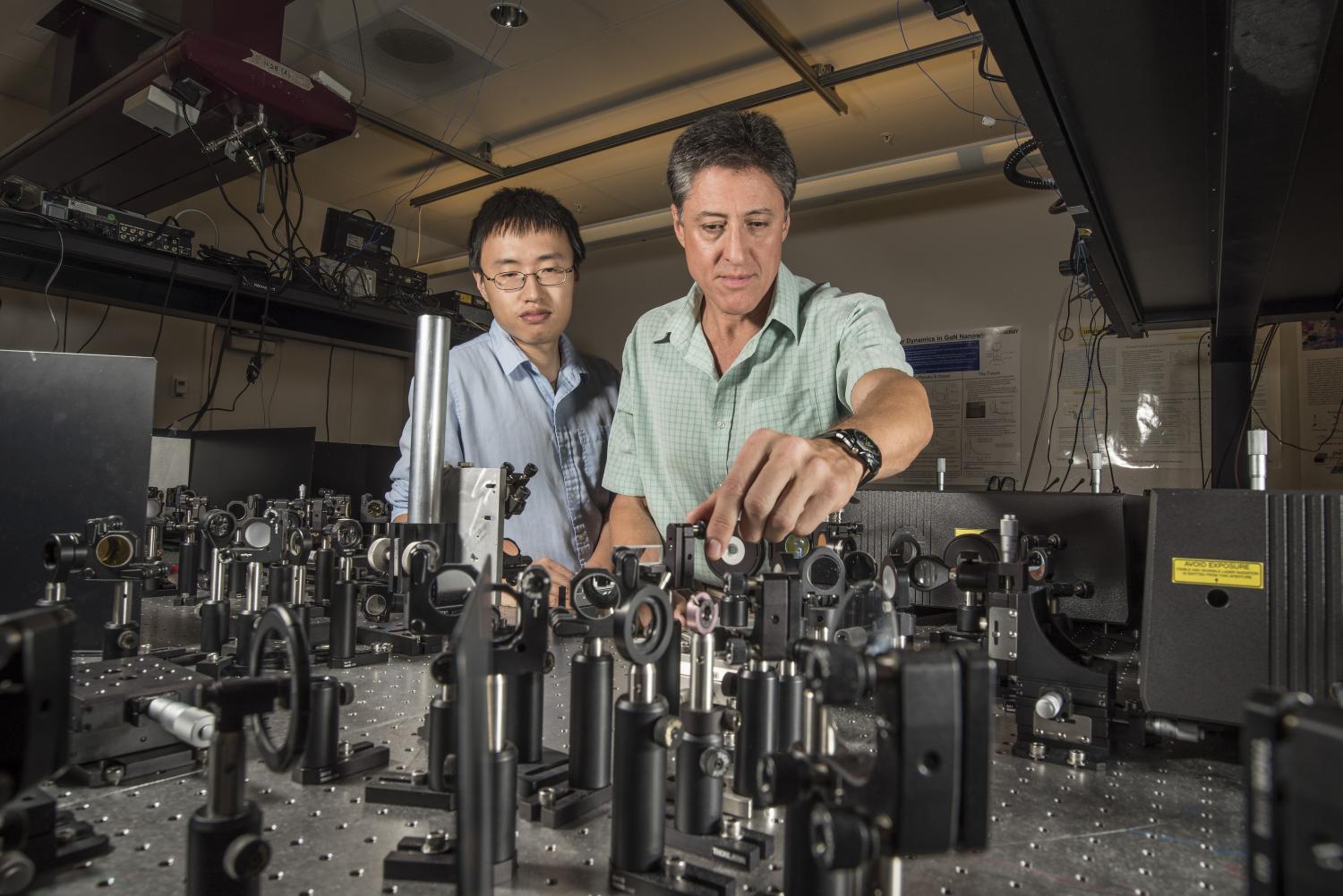A Sandia National Laboratories-led team has for the first time used optics rather than electronics to switch a nanometer-thick thin film device from completely dark to completely transparent, or light, at a speed of trillionths of a second.
The team led by principal investigator Igal Brener published a Nature Photonics paper this spring with collaborators at North Carolina State University. The paper describes work on optical information processing, such as switching or light polarization control using light as the control beam, at terahertz speeds, a rate much faster than what is achievable today by electronic means, and a smaller overall device size than other all-optical switching technologies.
Electrons spinning around inside devices like those used in telecommunications equipment have a speed limit due to a slow charging rate and poor heat dissipation, so if significantly faster operation is the goal, electrons might have to give way to photons.
